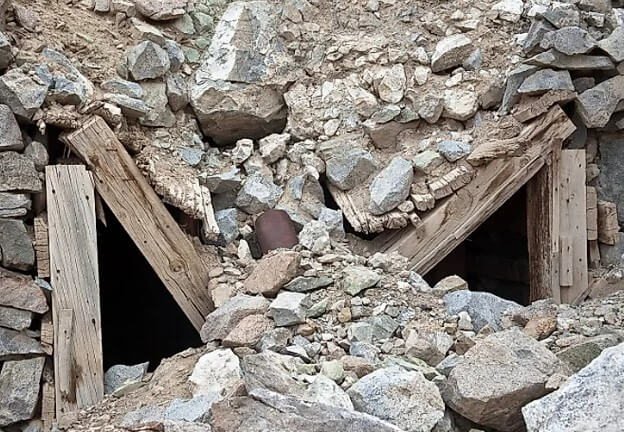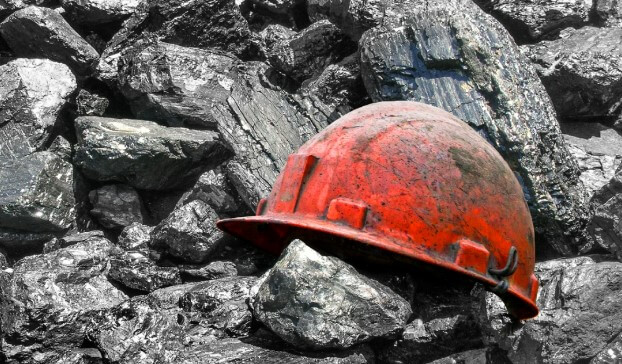Mining, while essential for resource extraction and economic development, presents inherent dangers to those working in this industry. The risk of accidents looms large, encompassing hazards such as cave-ins, explosions, and equipment malfunctions. However, with proactive safety measures, many of these accidents can be prevented or minimized. In this guide, we'll delve into "10 Safety Tips to Reduce Mining Accidents" proposed by Becker, a leader in industrial safety solutions.

GET IN TOUCH
In a hurry? Call us at 276-285-3841
1. Prioritize Comprehensive Training Programs
Educating workers about potential hazards and proper safety protocols is paramount. Comprehensive training programs should cover emergency procedures, equipment operation, hazard recognition, and mitigation strategies. Regular refresher courses ensure that safety practices remain at the forefront of employees' minds.
2. Implement Robust Safety Equipment
Personal protective equipment (PPE), including helmets, gloves, goggles, and respirators, serves as the first line of defense against workplace hazards. Becker recommends investing in high-quality safety gear designed to withstand the rigors of mining environments. Regular inspections and replacements of damaged equipment are essential to ensuring its effectiveness.
3. Embrace Technology for Monitoring and Control
Harnessing the power of technology can significantly enhance safety in mining operations. Utilize sensors, drones, and real-time monitoring systems to detect potential hazards, track worker locations, and remotely control equipment. These technological advancements provide invaluable insights and enable prompt intervention to prevent accidents.
4. Promote a Culture of Safety
Safety should be ingrained in the organizational culture, with every employee empowered to prioritize it in their daily activities. Foster open communication channels where workers feel comfortable reporting unsafe conditions or behaviors without fear of retribution. Recognize and reward individuals and teams that demonstrate exemplary safety practices.
5. Regularly Inspect and Maintain Equipment
Faulty or poorly maintained equipment can pose significant safety risks. Establish routine inspection schedules to identify potential issues before they escalate into accidents. Proper maintenance and timely repairs ensure that machinery operates smoothly, reducing the likelihood of malfunctions or breakdowns that could endanger workers.

GET IN TOUCH
In a hurry? Call us at 276-285-3841
6. Adhere to Strict Regulatory Compliance
Compliance with industry regulations and safety standards is non-negotiable. Stay abreast of evolving regulations and proactively implement measures to meet or exceed requirements. Conduct internal audits to assess compliance levels and address any deficiencies promptly. Prioritize the safety of workers and the surrounding environment in all operational decisions.
7. Implement Emergency Response Plans
Preparation is key to effectively responding to emergencies such as fires, explosions, or medical incidents. Develop comprehensive emergency response plans tailored to the specific risks inherent in mining operations. Conduct regular drills to ensure that all personnel are familiar with their roles and responsibilities during crisis situations.
8. Mitigate Risks Associated with Hazardous Substances
Mining activities often involve exposure to hazardous substances such as chemicals, dust, and gases. Implement stringent controls to minimize exposure levels and mitigate associated health risks. Provide adequate ventilation systems, personal monitoring devices, and decontamination facilities to safeguard workers' health.
9. Encourage Safe Work Practices
Promote safe work practices through ongoing education and reinforcement. Encourage behaviors such as proper lifting techniques, adherence to designated pathways, and cautious handling of equipment. Encourage peer-to-peer accountability, where workers look out for each other's safety and intervene when necessary.
10. Conduct Regular Safety Audits and Reviews
Continuous improvement is essential in maintaining a safe work environment. Conduct regular safety audits and reviews to identify areas for enhancement and address any emerging risks. Solicit feedback from workers regarding safety concerns and suggestions for improvement, fostering a collaborative approach to safety management.

GET IN TOUCH
In a hurry? Call us at 276-285-3841
Conclusion
Mitigating mining accidents requires a multifaceted approach encompassing robust training, technological innovation, stringent safety protocols, and a steadfast commitment to fostering a culture of safety. By implementing Becker's "10 Safety Tips to Reduce Mining Accidents," mining companies can significantly reduce the occurrence of accidents and ensure the well-being of their most valuable asset—their workforce. Remember, safety is not just a priority; it's a core value that should permeate every aspect of mining operations.
By adhering to these principles and continuously striving for improvement, we can create safer, more sustainable mining practices that protect both workers and the environment for generations to come. Let's make safety our top priority in the mining industry, today and every day.
Products We Offer:
- Explosion Proof Equipment
- Transformers
- Arc Guard
- Longwall Electrical Systems
- Capacitor Trip Devices
- Electrical Equipments like capacitor banks, switch houses, junctions, and splice boxes.
Power up your productivity with Becker Mining's ground fault relays - the reliable and efficient solution for all your power distribution needs. Call us today!